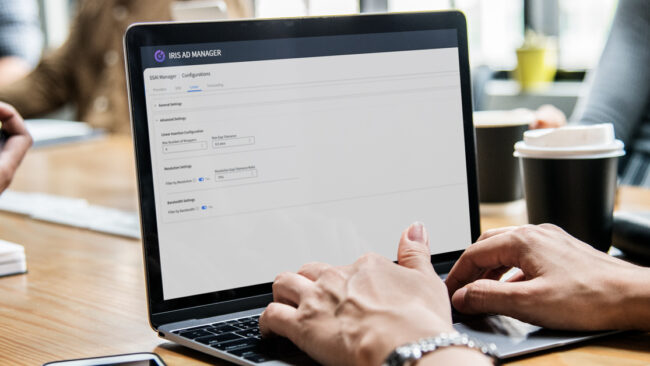
Synamedia
Iris
Addressable Advertising Platform
Our addressable advertising platform unifies your ad campaigns across both broadcast and streaming services, to make your ads more targeted, relevant and valuable for your business

Synamedia
Iris
Our addressable advertising platform unifies your ad campaigns across both broadcast and streaming services, to make your ads more targeted, relevant and valuable for your business
Increase the value of your inventory with addressable spots that bring new demand to premium TV.
Leverage your first and third-party data to target audience segments for improved engagement, recall, and response.
Deliver targeted ads to any screen – including broadcast set-top boxes – with digital precision and measurement.
Our addressable advertising solutions allow you to overcome some of the biggest challenges faced by video platform providers by unifying ad delivery across both broadcast and digital streaming services.



Deliver a scalable, seamless video experience with personalised advertising across all CTV devices.
Learn more
Improve viewer experience while generating new revenues from your users on whatever they’re watching.
Learn more
Access a wide range of demand sources to maximise ad fill rates in a premium, brand safe environment.
Learn moreWhether you want greater reach, better performance, or lower operating costs, Synamedia Iris is designed to help you maximise the potential of your advertising business.

Synamedia Iris manages all your campaigns, inventory, audiences, and assets from a single platform with consistent targeting, delivery, and reporting. With a holistic view of your ad business, you can optimise yields while reducing ad wastage.

Extend addressability to satellite, cable, or IPTV set-tops to reach all your audiences with targeted ads, regardless of what network they are on. Include all viewers, even if they lack full connectivity or local hard drive storage on their device.

Work with your content partners to leverage addressability even if you don’t own the inventory outright. Flexible ad routing enables you to route opportunities to third-party demand sources and monetise the delivery of targeted ads.

With Synamedia Iris, you can effectively fill inventory with both programmatic and direct-sold demand while prioritising campaigns for higher yields. By comparing multiple bids with fixed pricing offers, you’ll get the most bang for your inventory buck.

Get detailed, customisable reports based on both real-time and panel data so you can better forecast performance and adjust in-flight campaign parameters like alternate creatives, targeting, and delivery to optimise yield.

Attract local advertisers with bandwidth-efficient regionalised ad replacement on the Synamedia Media Edge Gateway, all while getting the full range of digital targeting, inventory, and campaign management options.

Quickly deploy Synamedia Iris as a global cloud SaaS solution that can work with any CDN, app, or player. Leverage our client libraries to get IAB-standard Open Measurement compliant metrics for ad viewability and verification.

Whether you have a FAST, AVOD, or live OTT service, you can target ads based on contextual and addressable parameters that use time, location, device, content metadata, or demographic data to deliver the most relevant and lucrative campaign.

Secure your customer data, reduce risk, and comply with privacy regulations such as GDPR with Synamedia Iris, which also uses the industry-standard Transparency & Consent Framework to share data and user consent.






Learn how you can unleash your addressable advertising potential.
Download eGuideWant to explore potential growth opportunities with addressable advertising? We are here for a discussion.
Free consultationRequest a free demo to see how Iris can benefit your business.
Book a demo
We won’t rest until you’re benefiting as much as possible from all that Iris offers. After all, our mission is your success. Whether you need help getting started, with deployment and optimisation of addressable advertisements, or specific tasks relating to your business, our expert 360° Support teams will resolve your request as quickly as possible.
Learn moreSign up to Synamedia events and news